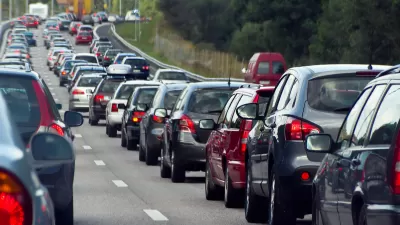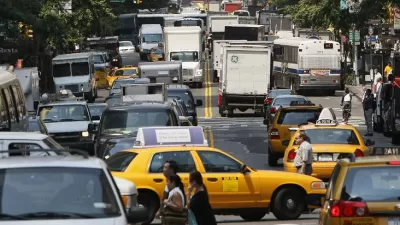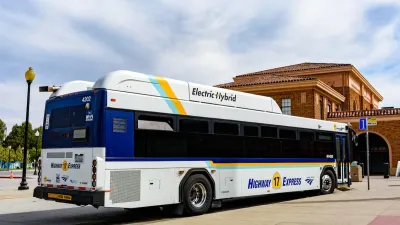In rural America, young people overwhelmingly prefer driving to using other forms of transit, whether that's a function of the options available or natural preference is subject to debate.

A recent study from Montana State University found that, unlike their peers in suburban and urban communities, Millennials in rural areas prefer to drive. According to this study, 87% of Millennials from rural areas and small towns prefer to travel by car. "Just 0.5 percent of rural America uses public transportation to get to work, compared to 6.2 percent of urbanites," according to reporting from Aarian Marshall in Wired. The tendency to use automotive transport was not just a product of long work commutes, "Even among Millennials still in school, just one in five want to use the bus, while three quarters are still all about cars," Marshall writes.
What causes this stated preference is debatable, it could be that the infrastructure doesn't exist and so it's hard for Millennials in these communities to express a preference for something they haven’t experienced, or it could be that this is a deeply rooted value. The authors of the study tell Marshall that the transit options of rural communities is an area that hasn't been studied enough, and that they hope the question of what causes the car preference will motivate future study.
FULL STORY: Rural Millennials Still Dig Driving. Well, They Have No Choice

Planetizen Federal Action Tracker
A weekly monitor of how Trump’s orders and actions are impacting planners and planning in America.

Congressman Proposes Bill to Rename DC Metro “Trump Train”
The Make Autorail Great Again Act would withhold federal funding to the system until the Washington Metropolitan Area Transit Authority (WMATA), rebrands as the Washington Metropolitan Authority for Greater Access (WMAGA).

The Simple Legislative Tool Transforming Vacant Downtowns
In California, Michigan and Georgia, an easy win is bringing dollars — and delight — back to city centers.

The States Losing Rural Delivery Rooms at an Alarming Pace
In some states, as few as 9% of rural hospitals still deliver babies. As a result, rising pre-term births, no adequate pre-term care and "harrowing" close calls are a growing reality.

The Small South Asian Republic Going all in on EVs
Thanks to one simple policy change less than five years ago, 65% of new cars in this Himalayan country are now electric.

DC Backpedals on Bike Lane Protection, Swaps Barriers for Paint
Citing aesthetic concerns, the city is removing the concrete barriers and flexposts that once separated Arizona Avenue cyclists from motor vehicles.
Urban Design for Planners 1: Software Tools
This six-course series explores essential urban design concepts using open source software and equips planners with the tools they need to participate fully in the urban design process.
Planning for Universal Design
Learn the tools for implementing Universal Design in planning regulations.
Smith Gee Studio
City of Charlotte
City of Camden Redevelopment Agency
City of Astoria
Transportation Research & Education Center (TREC) at Portland State University
US High Speed Rail Association
City of Camden Redevelopment Agency
Municipality of Princeton (NJ)





























